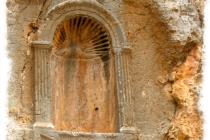Measures and Treasures: Beka Stone Discovery Sheds New Light on the Ancient Temple
Israel is a study in contrasts. As our travelers know, a visitor can stand on a top floor of a gleaming, modern, high-rise hotel or office building, then look out on an archaeological dig where ancient biblical artifacts are being unearthed. One of those projects, located in the Emek Tzurim National Park north of Jerusalem’s City of David, recently made a significant discovery tied to the pages of Scripture—a tiny piece of history with an outsized impact on the Bible’s historical reliability.
In a collection of archaeological soil excavated from the foundation of the Western Wall, researchers discovered a tiny stone weight inscribed with ancient Hebrew letters. The letters read “Beka.” Recorded twice in Scripture, the word was used to describe the weight of the half-shekel donation Jewish people paid to maintain the Temple:
"...one beka per person, that is, half a shekel, according to the sanctuary shekel, from everyone who had crossed over to those counted, twenty years old or more..." (Exodus 38:26)
The Temple Tax
In other words, every worshiper who was 20 or older was required to pay a half-shekel as their “Temple tax.” Coins weren’t used in this area until around 500 B.C. so there were no actual half-shekel coins. People used an amount of precious silver instead and would have used this type of stone to measure the corresponding weight of silver. It was a very small amount, equivalent to one-fifth of an ounce. Once paid, they could ascend the Temple Mount. The Temple used the donations of silver for upkeep and to supply sacrificial animals.
Earlier in the Old Testament, the unit of weight beka was also used to describe the size of the gold nose ring given to Rebekah by Abraham’s servant after she watered his camels.
These measuring stones are extremely rare, as only a few have been discovered. This beka stone is even more unique, as the engraving reads from left to right instead of the right to left in Hebrew. Why? Scholars believe it was designed by a craftsman who produced seals and was used to chisel in the mirror-image script. (The backwards inscription may have been a simple mistake. The word was carved properly on the one other beka stone that has been discovered.)
Ancient Treasures
Experts have speculated that this particular weight may be up to 3,000 years old, which dates it to the First Temple period—Solomon’s temple, before it was destroyed by Nebuchadnezzar, centuries before the Second Temple and Western Wall were built. Could this tiny stone have actually been used in Solomon’s temple? It’s possible, and some experts say it helps confirm the former existence of the temple itself.
At the least, the stone confirms a system of weights and measures mentioned in the Bible. It is also a reminder that biblical artifacts are being discovered on a regular basis in Israel, and that the Jewish people have been connected to Jerusalem for thousands of years.
Other treasures discovered in this soil have included arrowheads, jewelry, coins and the royal seal of King Hezekiah. The newly found beka stone is on display to the general public during Hanukkah at the National Park in Jerusalem’s City of David archaeological site. Of course, biblical artifacts are just one type of treasure you’ll encounter on a faith-enriching tour of Israel. Other treasures are spiritual, as you encounter God’s presence and a deeper understanding of His Word.
Regardless, almost everything in this fascinating, ancient nation connects you more deeply with Scripture and the life-changing story of God and His people.






